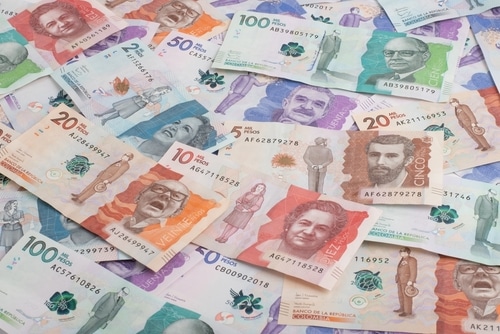The Colombian peso (COP) is not just money. It is also an important part of the country’s culture. The COP pays respect to people and things that are well known in Colombia. It shows special local symbols. It has up-to-date safety marks to help keep it safe from fraud. Each part of the COP helps to show the lively spirit of Colombia. You may be going to Colombia, sending money, or learning how money works there. This guide will help you get the main facts you need.
What Is the Colombian Peso?
The Colombian peso is the money people use in Colombia. It uses the symbol “$” and the code “COP”. The Banco de la República makes and looks after this currency. The peso is a big part of the country’s money system. To show it is not like the dollar or other currencies, you will often see it written as Col$.
Denominations and Design
Banknotes currently in circulation include:
- 2,000 COP – Débora Arango and Caño Cristales
- 5,000 COP – José Asunción Silva and moorland
- 10,000 COP – Virginia Gutiérrez and snake road
- 20,000 COP – Alfonso López Michelsen and La Mojana
- 50,000 COP – Gabriel García Márquez and the Lost City
- 100,000 COP – Carlos Lleras Restrepo and Cocora Valley
Coins include: 50, 100, 200, 500, and 1,000 COP.
Fascinating Facts About the Colombian Peso
1. Two Versions of Some Banknotes Exist
Some of the money, such as the 50,000 COP, come in both up-and-down and side-to-side designs. The older notes had the writer Jorge Isaacs on them. The newer notes now show Gabriel García Márquez. This helps keep the country’s strong tradition in books and writing.
2. Tourists Can Claim VAT Refunds
Non-residents can get VAT (Value Added Tax) refunds when they buy some goods such as crafts and jewelry. You need to handle your refund with DIAN, which is Colombia’s tax office. Be sure to keep all your receipts and have your passport with you for when you make a claim at the airport.
3. Advanced Security Features Protect the Peso
To help stop fraud, Colombian banknotes use:
- Watermarks
- Security threads
- Color-shifting inks
- Motion effects
- Tactile marks that help people who can’t see well
These updates help keep trust and honesty in the currency system.
4. Cultural Icons on Every Note
From poets and presidents to people who study humans and those who paint, Colombian pesos honor many national heroes. These are the men and women who helped shape the country’s identity.
5. Vibrant Art Meets Functionality
Banknotes have bright colors and pictures that show off Colombia’s many different environments. You can see things like tropical rivers and highland moorlands on them. This way, money becomes a way to show national pride.
Colombian Peso FAQs
What is the Colombian peso and its symbol?
The peso is Colombia’s official currency, denoted by COP and symbolized with $.
Are there different designs for the same denomination?
Yes. For instance, the 50,000 COP note has both a vertical design (older) and a horizontal version (newer), each featuring different figures.
Can tourists claim VAT refunds?
Yes. Submit receipts and documents to DIAN for eligible VAT claims when leaving Colombia.
What security features protect Colombian pesos?
Look for watermarks, security threads, tactile markings, and color-shifting inks as indicators of authenticity.
Is the peso accepted outside Colombia?
Generally, no. It’s best to exchange any leftover pesos before departing the country.

